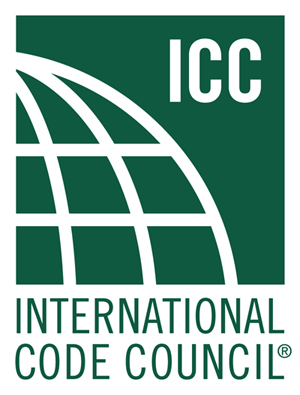Your cart is currently empty!
Understanding the Global Standard: The IPMC in Focus

In the ever-evolving world of real estate and urban development, maintaining properties to a universal standard is essential for ensuring safety, health, and aesthetic value. The International Property Maintenance Code (IPMC) emerges as a critical framework in this context, providing a comprehensive guide for property upkeep. This article delves into the IPMC, exploring its key principles, benefits, and the challenges associated with its implementation.
Introduction to the International Property Maintenance Code
The International Property Maintenance Code (IPMC) is a model code developed by the International Code Council (ICC) to establish minimum maintenance standards for existing buildings. It serves as a vital tool for municipalities, property owners, and code officials to ensure that structures are safe, clean, and habitable. The IPMC covers a broad spectrum of aspects, including structural integrity, sanitation, and fire safety, among others.
The IPMC is designed to be adaptable, allowing jurisdictions worldwide to adopt and customize it according to their specific needs and regulatory environments. This flexibility makes it a valuable resource for both developed and developing regions, facilitating a universal approach to property maintenance. By providing clear and enforceable guidelines, the IPMC helps mitigate the risks associated with poorly maintained buildings.
One of the key strengths of the IPMC is its comprehensive nature. It addresses not only the physical condition of buildings but also the surrounding environment, including landscaping and waste management. This holistic approach ensures that properties are maintained in a manner that promotes overall community well-being. For more detailed information on the IPMC, visit ibc-manual.com.
The code also emphasizes the importance of regular inspections and maintenance schedules. By requiring periodic evaluations, the IPMC helps identify potential issues before they escalate into serious problems. This proactive approach is crucial for preserving property values and ensuring the longevity of buildings.
Another significant aspect of the IPMC is its focus on occupant safety and health. The code includes provisions for adequate ventilation, pest control, and emergency egress, among other factors. These measures are essential for creating living and working environments that are not only safe but also conducive to the well-being of occupants.
In conclusion, the International Property Maintenance Code is a foundational document that sets the stage for consistent and effective property upkeep. Its comprehensive guidelines and adaptable framework make it an indispensable resource for anyone involved in property management and urban development.
Key Principles of the IPMC: Ensuring Global Standards
The IPMC is built on several key principles that collectively ensure a high standard of property maintenance across the globe. One of the primary principles is the emphasis on structural integrity. The code mandates that all buildings must be kept in sound condition, free from significant deterioration or damage. This includes maintaining roofs, walls, and foundations to prevent hazards such as collapses or water infiltration.
Sanitation is another cornerstone of the IPMC. The code stipulates that properties must be kept clean and free from waste and debris. This principle extends to both the interior and exterior of buildings, ensuring that living and working environments are hygienic and pleasant. Proper waste disposal systems and pest control measures are also mandated to prevent health risks associated with unsanitary conditions.
Fire safety is a critical aspect of the IPMC, reflecting the importance of protecting occupants from the dangers of fire. The code requires that buildings be equipped with functional fire detection and suppression systems, as well as clear and accessible emergency exits. Regular inspections of these systems are mandated to ensure they remain operational and effective.
The IPMC also addresses the issue of occupancy standards. It specifies the minimum space requirements for different types of rooms and mandates that properties must not be overcrowded. This principle is crucial for ensuring that occupants have sufficient living space and that buildings do not become overburdened, which could compromise structural integrity and safety.
Another significant principle is the maintenance of building services. The IPMC requires that essential services such as plumbing, heating, and electrical systems be kept in good working order. This ensures that occupants have access to necessary amenities and that buildings remain functional and comfortable.
Finally, the IPMC emphasizes the importance of aesthetic upkeep. The code includes provisions for maintaining the exterior appearance of buildings, including paint, landscaping, and signage. This principle not only enhances the visual appeal of properties but also contributes to the overall attractiveness and value of communities.
Benefits of Adopting the IPMC for Property Owners
Adopting the International Property Maintenance Code offers numerous benefits for property owners. One of the most significant advantages is the enhancement of property value. Proper maintenance ensures that buildings remain in good condition, which directly contributes to their market value. Well-maintained properties are more attractive to potential buyers and tenants, resulting in higher demand and better financial returns.
Another key benefit is the reduction of liability risks. By adhering to the IPMC, property owners can demonstrate their commitment to maintaining safe and habitable conditions. This can be crucial in legal contexts, as it provides a clear framework for compliance with safety and health regulations. In the event of accidents or disputes, having followed the IPMC can protect property owners from potential lawsuits and penalties.
The IPMC also contributes to lower maintenance costs over time. Regular inspections and upkeep help identify and address minor issues before they escalate into major problems. This proactive approach can prevent costly repairs and extend the lifespan of building components, ultimately saving property owners money in the long run.
Improved tenant satisfaction is another significant benefit of adopting the IPMC. When properties are well-maintained and meet high standards of safety and comfort, tenants are more likely to be satisfied and stay for longer periods. This can reduce vacancy rates and turnover costs, contributing to more stable and predictable rental income.
The IPMC also fosters a positive community image. Properties that comply with the code contribute to the overall appearance and quality of neighborhoods. This can enhance the reputation of property owners and attract more desirable tenants or buyers. A well-maintained property reflects positively on its owner and can lead to better relationships with neighbors and local authorities.
Finally, adopting the IPMC can provide property owners with peace of mind. By following a comprehensive and widely recognized set of standards, owners can be confident that they are doing everything possible to maintain their properties effectively. This can reduce stress and uncertainty, allowing property owners to focus on other aspects of their investments.
Challenges and Solutions in Implementing the IPMC
While the International Property Maintenance Code offers numerous benefits, its implementation is not without challenges. One of the primary obstacles is the cost associated with bringing properties up to code. For older buildings or those that have been neglected, the initial investment required to meet IPMC standards can be significant. This can be a deterrent for property owners, particularly those with limited financial resources.
To address this challenge, various funding and incentive programs can be leveraged. Governments and local authorities can offer grants, low-interest loans, or tax incentives to property owners who commit to upgrading their properties in line with the IPMC. These financial aids can make it more feasible for owners to undertake necessary improvements without bearing the full financial burden upfront.
Another challenge is the potential resistance from property owners who may be unfamiliar with the IPMC or skeptical of its benefits. Education and outreach are crucial in this regard. Providing clear information about the advantages of adopting the IPMC, as well as offering training sessions and resources, can help alleviate concerns and promote compliance. For comprehensive resources, visit ibc-manual.com.
Enforcement is another significant challenge. Ensuring that all property owners comply with the IPMC requires a robust system of inspections and penalties. This can be resource-intensive for local authorities, particularly in areas with a large number of properties. Developing efficient inspection schedules and leveraging technology, such as digital reporting tools, can streamline the enforcement process and make it more manageable.
Cultural and regional differences can also pose challenges to the implementation of the IPMC. What is considered standard or acceptable in one region may not be the same in another. The adaptability of the IPMC is a key strength in this context, as it allows for modifications to suit local conditions and preferences. Engaging local stakeholders in the adaptation process can ensure that the code is relevant and respected within the community.
Finally, ongoing maintenance and compliance can be challenging. Even after properties are brought up to code, ensuring that they remain compliant requires continuous effort and vigilance. Establishing regular maintenance schedules and incorporating IPMC standards into routine property management practices can help address this issue. Encouraging a culture of proactive maintenance among property owners and managers is essential for sustaining long-term compliance.
In conclusion, while implementing the IPMC presents certain challenges, there are viable solutions to overcome them. Through financial incentives, education, efficient enforcement, cultural adaptation, and ongoing maintenance, the benefits of the IPMC can be fully realized, leading to safer, more valuable, and well-maintained properties worldwide.
The International Property Maintenance Code represents a significant step towards global standardization in property upkeep. By understanding its principles, benefits, and challenges, property owners and managers can better appreciate the value of adopting this comprehensive code. With the right strategies and support, the IPMC can lead to safer, more appealing, and economically viable properties, ultimately enhancing communities worldwide. For further information and resources on the IPMC, visit ibc-manual.com.
